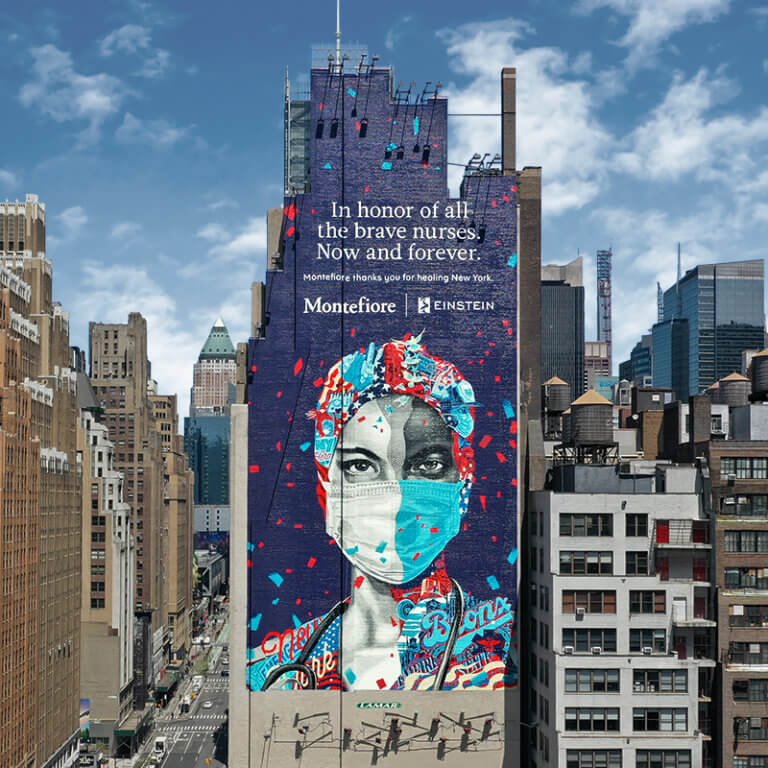
Now that November is upon us, we begin to reflect on all that 2020 has brought, and it’s almost impossible to recall memories that were not directly related to or affected by the pandemic. For many, it’s definitely been one of the most unprecedented and distressing years to date. The same is true for the advertising world. Since early March of this year, the OOH advertising market has been scrambling to find new and inventive ways to engage with consumers, especially while everyone remains at home. However, a lot of recent studies have come out in favor of OOH advertising amidst the pandemic, demonstrating its effectiveness and innovation during these extremely difficult times. Let’s take a look at some of these statistics, their reasoning, and some amazing examples of OOH advertising amid the pandemic.
Why the great outdoors are perfect for advertising right now
According to a study recently conducted by the Out-of-Home Advertising Association of America (OAAA), roughly 45% of American adults say they’re noticing OOH advertising more than before the pandemic began – more specifically adults aged 18 and older. This statistic is based on the fact that more people are having a bigger appreciation for the outdoors as it becomes one of the few places that they can enjoy themselves without coming into contact with others. This also means that they have become more receptive to OOH ads and less distracted to devices like phones. According to the same study, 48% of American adults are on the hunt for new places to work whether that be at home or spending time at outdoor parks, outdoor coffee shops, bars, and friends’ patios. People are adventuring outside more than ever, whether that be around their own neighborhoods or further out. These statistics explain why OOH advertising has had such an advantage when it comes to consumer engagement. People are paying attention to their surroundings and are also willing to explore on foot, which makes them all the more susceptible to billboards, truck-side ads, bus stop ads, and more.
OOH advertising versus digital and online advertising
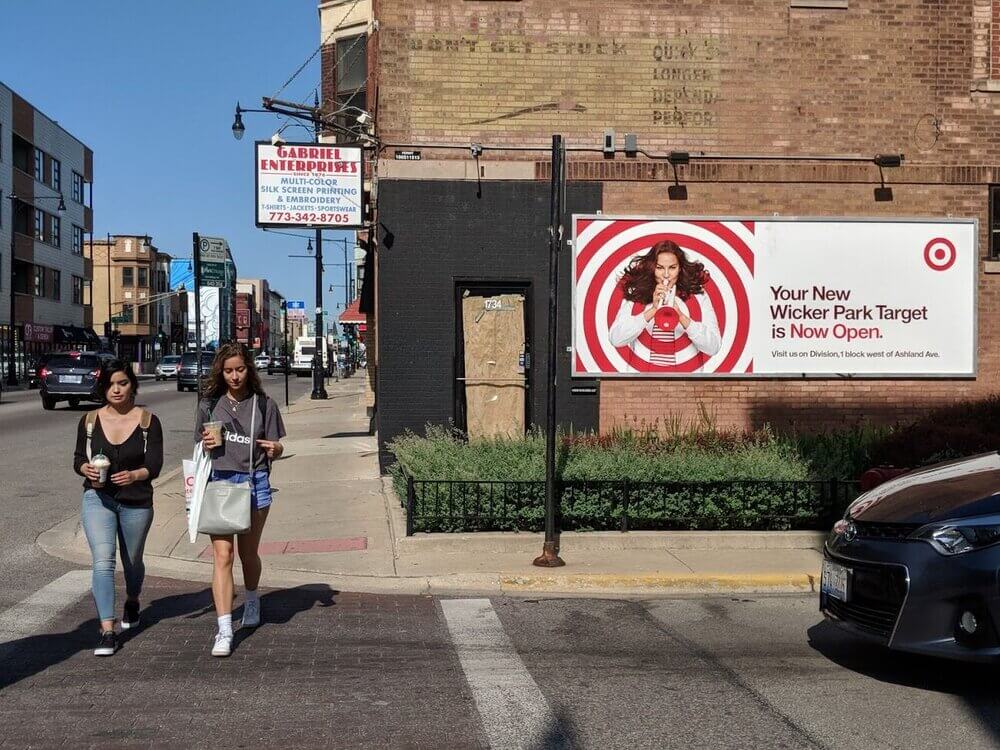
Although the online and digital advertising market is still extremely prevalent, the pandemic has changed the way people utilize the internet and other such digital platforms. According to the OAAA, consumers are suffering from digital burnout and are tuning out digital ads more than ever before. More than 68% of American adults say they’re spending way too much time looking at their screens. People are becoming increasingly addicted to their digital devices, even before the pandemic hit. However, now that Covid has kept everyone inside and on their phones, laptops, and tablets, people are welcoming any and all other means of entertainment to escape. This also means that online advertising is being tuned out and ignored, which provides OOH advertising with the perfect opportunity to reach consumers more organically and without distraction.
Staying informed via OOH ads
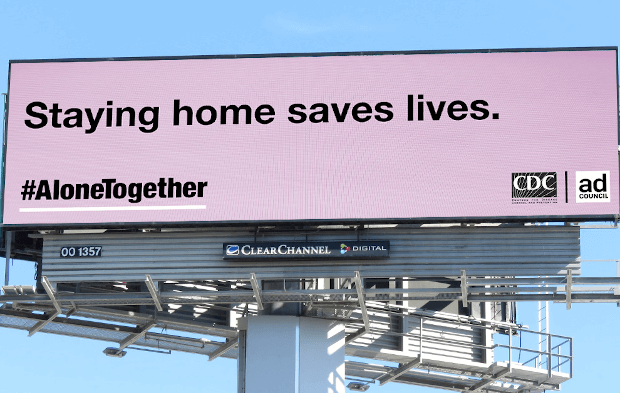
More specifically, consumers are engaging the most with OOH ads that deal with the pandemic and hygiene in general. According to the OAAA, when asked what their reaction is to pandemic-related ads, 23% of Americans said that it informed them about something new and 20% said it comforted them. People appreciate being informed, especially about something as serious as the pandemic. Consumers also like to be reassured by brands and other such companies that they are doing their part in creating safety precautions for their customers and that although the consumer experience will be different, businesses are still being run.
Trying new brands
When looking towards the holiday season, consumers are considering buying products from new brands due to the pandemic. According to MarTech Series, an online publication that covers marketing technology, 4 out of 10 consumers are using a mix of new and familiar brands and in that same stat, 12% say that they will continue to use these newly discovered brands after the pandemic. These statistics open the door for advertisers to establish themselves in the eyes of consumers who are changing up their regular spending habits. The best way to do so, is with OOH advertising because these kinds of ads are big, bold, and enticing to those who are looking to try new products.
Targeting consumers during the holidays
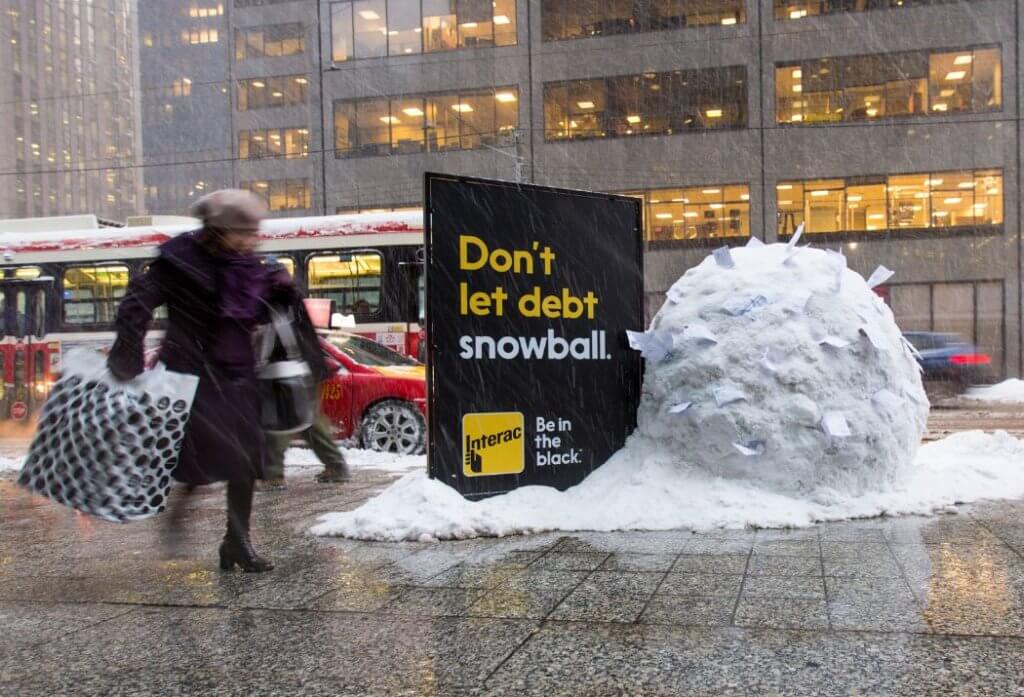
In terms of holiday related trips and travel plans, people prefer to use their cars more than any other mode of transportation during these times. According to MarTech Series, roughly 56% of the population are preparing to travel by personal car to visit their loved ones, stating that, “hitting the road” is their preferred way to go. Many people, especially those living in urban metropolises, don’t want to take public transit right now. People also don’t feel comfortable flying or taking the train – they feel most safe travelling in their own cars. This allows OOH advertising the best opportunity to reach people. Billboards, truck-side ads, and bus-stop ads are all great ways to reach consumers as they pass by in their cars on their way to holiday bubbled parties, to see loved ones, go holiday shopping, and more.
Hyperlocal advertising
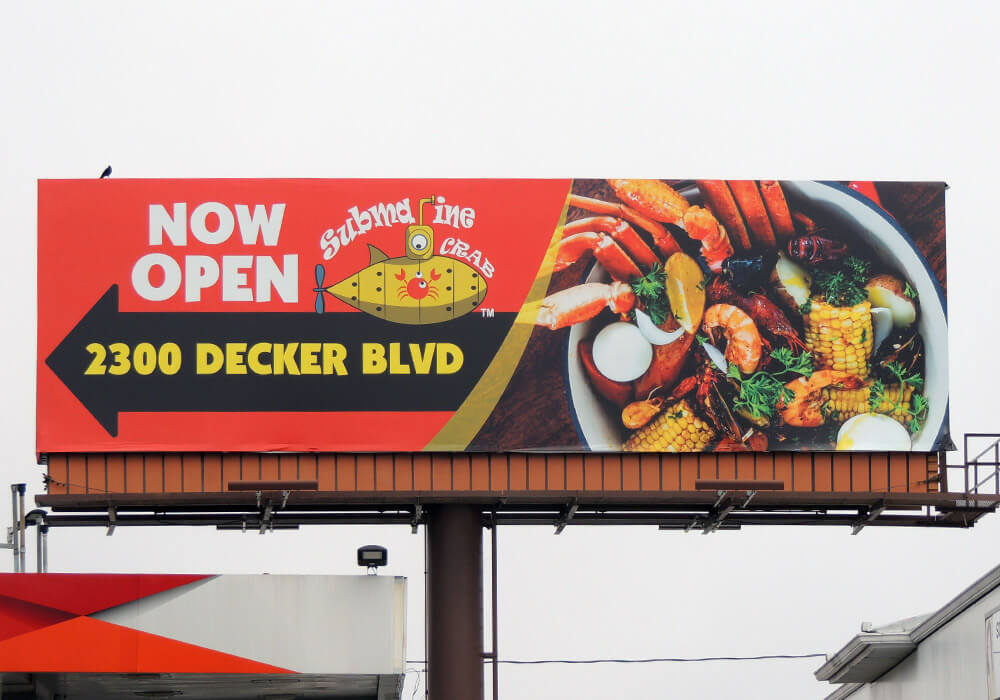
Advertising has always had to adapt to new trends and the pandemic is no different. Because consumers have completely changed the way they live, advertising agencies have had to reinvent ads that target consumers where they are – in their own own neighborhoods. According to Atul Shrivastava, CEO of Laqshya Media Group, “OOH is one of the two media (along with digital) best suited for hyperlocal content. OOH as a medium allows the advertiser brand to customise campaigns locally to deliver messages relevant to that area, instead of splashing one campaign over large areas like conventional mass media. Post COVID, brands will try to reserve cash. So, detailed planning and hyperlocal campaigns that ride with supply chains and retail restoration will be definitely beneficial for the brands in relation to cost and ROI.” OOH advertising is also an extremely cost-effective way of advertising hyperlocal because of the access we now have to abundant data regarding consumer behaviours. By leveraging contextual information and geo-location targeting, hyperlocal advertising has never been easier, especially when using an OOH ad medium such as truck-side advertising. The route, plan, and ads that are displayed can be altered relatively easily for a truck-side advertising company. With this in mind, your brand will be able to target exactly who they want, when they want, for a lower cost than any other ad medium.
Examples of OOH that are working during the pandemic
This year, many companies used their marketing tactics as a way to inform and caution people about COVID-19, while at the same time, demonstrating to consumers their corporate responsibility, which in turn, creates brand loyalty and respect. The social media platform, Twitter – known for their tweets that they turn into big, bold billboards – took to the streets of several US cities to remind people to socially distance, wear masks, and be safe and smart during the pandemic. They displayed massive billboards that included tweets from various Twitter users regarding pandemic safety, including tweets like, “So… is ‘hey nice mask’ the new pick up line?” and, “Why do I feel like everyones giving me Resting Mask Face?”. The tweets were meant to be a little bit cheeky, definitely relatable, and a subtle reminder to do the right thing when it comes to staying healthy and safe.
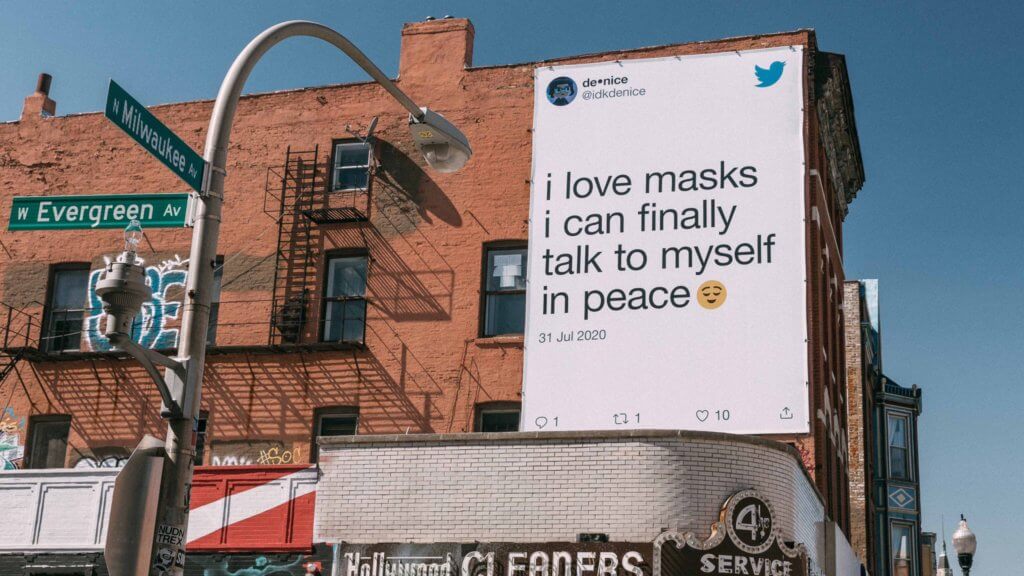
Back in April, the OOH industry donated ad space to Mother Londan in partnership with Outsmart in order to create their campaign called, “Grateful Britain”. The large OOH billboard located in London shared words of kindness and appreciation for all of the healthcare workers on the frontline during the pandemic thus far. One of the billboards read, “At 8pm tonight, let’s clap for our crock wearin’, stethoscope slingin’, patient carin’ heroes.” The lighthearted messages were especially impactful because they were placed where many healthcare workers would see them as they commute to work. Overall, the message and the location of the OOH ad was perfect for getting the point across to the right people at the right time.
Instead of allowing the pandemic to ruin the ad campaigns that companies had planned already, some embraced the change of plans and used OOH advertising to do it. HUN Wine for example, launched a tongue-in-cheek OOH campaign amidst the lockdowns in London, England right before the summer. HUN Wine knew that launching a new product during a pandemic – especially one that’s designed for large gatherings, festivals, and parties – was going to be a challenge. However, instead of scratching the whole thing, they decided to use specific location-based OOH advertising to stay relevant and not stray from their original goal of promoting their new wine-in-a-can products.

They placed two large billboards directly outside the entrance of where the launch party for the new product was supposed to be. The billboards poked fun at the fact that people can’t gather together in one place by saying, “We were going to have our launch party here. But no one could make it.” They also placed ads all over London that said things like, “Did you see our new advertising campaign? No, didn’t think so” and, “Our advertising agency put our poster out here. They’re not our advertising agency anymore.”, both relating to the fact that not many will see the billboards as they should be staying indoors. The wine cooler company also launched a digital campaign at the same time that offered free wine to people who had their birthdays, weddings, and anniversaries during the lockdown. This campaign gained a lot of traction on social media platforms like Instagram, Facebook, and Twitter where people were excited to share HUN’s comedic references. Overall, this campaign was a huge success in creating brand awareness and just in time for the summer months when people could begin to enjoy their beverages outdoors.
A great example of a brand benefiting from hyperlocal and contextual OOH advertising is Co-op, a British consumer co-operative with many retail businesses all over the UK. Last summer, in partnership with Lucky Generals, Co-op created hyperlocal communicative OOH billboards that targeted specific audiences right before the point-of-sale. For example, they placed one of their billboards for a food ad that featured the message, “Our tea gives Warrington Mencap a break” right near one of their stores and referred to a specific area near the store. All of their other billboard ads also linked directly to the proximity of the store as well as the funeral homes they do business with. Posterscope’s location planning tool called ECOS, has enabled Co-op to figure out which frame to use where so that each relevant local message is properly placed in the right spots. Both the relevancy and location-based technology are what make this campaign so great and enticing to consumers who can relate perfectly to the ads.
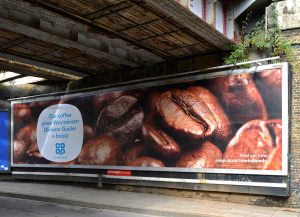
Wrap up
This year has been one of the most, if not the most, unprecedented years for everyone. Luckily, the advertising world is used to adapting to new situations, trends, and behaviours. OOH advertising agencies specifically have been able to adapt so well to the vast amount of changes this year has brought because of the medium’s versatility and creative flexibility. People are more willing than ever to roam around their neighbourhoods, escape their houses, and their devices. This makes them more susceptible to OOH ads, especially when these ads are telling them vital information about the pandemic. With the holiday season quickly approaching, more people will be taking their cars to visit loved ones, which also makes them more willing to pay attention to billboards, bus-stop ads, and more. Moving forward, hyperlocal OOH advertising is the best way to reach people as they remain, for the most part, bubbled within their own neighbourhoods – especially as the weather gets colder. So don’t be surprised if you start noticing them during your daily strolls, dog walks, or grocery runs… OOH ads will be making big moves in your neighbourhood this winter season!


